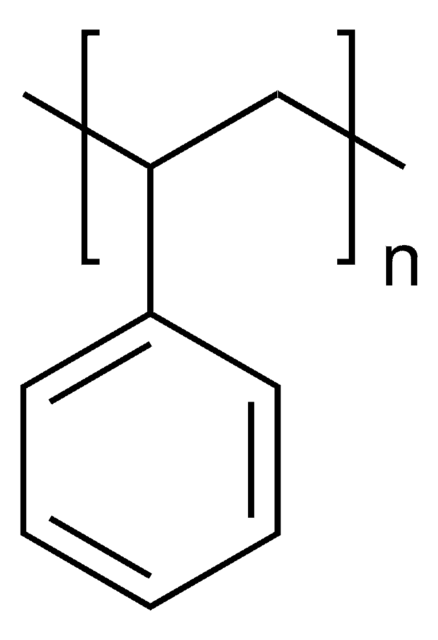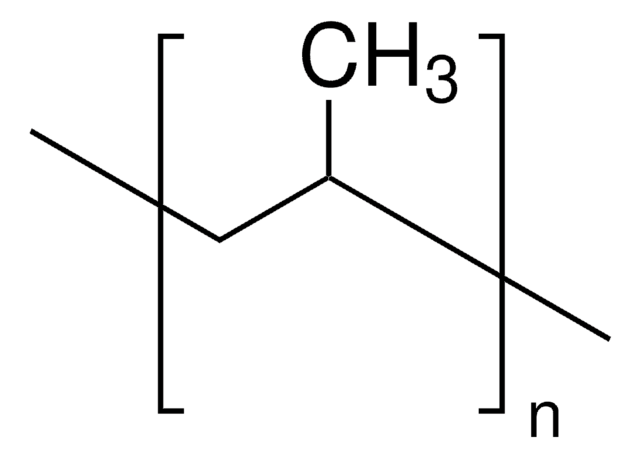450383
Polystyrene
average Mw ~400,000 by GPC
Synonym(s):
PS
About This Item
Recommended Products
form
powder
mol wt
average Mw ~400,000 by GPC
mp
212 °C
InChI
1S/C8H8/c1-2-8-6-4-3-5-7-8/h2-7H,1H2
InChI key
PPBRXRYQALVLMV-UHFFFAOYSA-N
Looking for similar products? Visit Product Comparison Guide
Application
- Applications of Polystyrene in Industrial Chemistry: This comprehensive review discusses the synthesis, characteristics, and wide-ranging applications of polystyrene, emphasizing its role in academic research and industrial usage (T Arfin et al., 2015).
- Upcycling Polystyrene: This article explores innovative approaches to recycling polystyrene, reducing environmental impact and advancing sustainability in material sciences (JC Capricho et al., 2022).
- Potential Toxicity of Polystyrene Microplastic Particles: Examines the potential impacts of polystyrene microplastics on human health at the cellular level, important for public health and safety (J Hwang et al., 2020).
Physical form
Storage Class Code
11 - Combustible Solids
WGK
WGK 3
Flash Point(F)
Not applicable
Flash Point(C)
Not applicable
Personal Protective Equipment
Regulatory Listings
Regulatory Listings are mainly provided for chemical products. Only limited information can be provided here for non-chemical products. No entry means none of the components are listed. It is the user’s obligation to ensure the safe and legal use of the product.
JAN Code
450383-1G:
450383-1G-PW:
450383-VAR:
450383-BULK:
Certificates of Analysis (COA)
Search for Certificates of Analysis (COA) by entering the products Lot/Batch Number. Lot and Batch Numbers can be found on a product’s label following the words ‘Lot’ or ‘Batch’.
Already Own This Product?
Find documentation for the products that you have recently purchased in the Document Library.
Customers Also Viewed
Articles
Universal Platform for Surface Modification Employing Grafted Polymer Layers
Our team of scientists has experience in all areas of research including Life Science, Material Science, Chemical Synthesis, Chromatography, Analytical and many others.
Contact Technical Service


